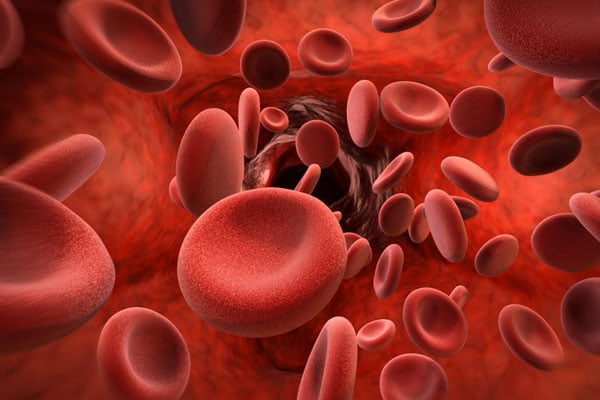Nangulu’s long battle with bleeding disorder

Hemophilia mostly affects men. PHOTO/COURTESY
What you need to know:
- Mr Nangulu,26, has been battling haemophilia, a rare bleeding disorder, since childhood.
In this second part series of covering rare diseases in the country, we look at Mr Peter Nangulu’s story of coping with hemophilia, a rare condition that affects the clotting of blood.
When one meets Mr Peter Nangulu for the first time, it is hard to imagine that he is battling any serious disease. Physically, he seems fine, yet all is not well with him.
Mr Nangulu,26, has been battling haemophilia, a rare bleeding disorder, since childhood.
The disorder affects the clotting of blood in the body and also makes body joints swollen.
Mr Nangulu, who is a youth coordinator with Haemophilia Foundation of Uganda (HFU), says no one in his family understood what was happening with his body whenever he sustained either a bruise or cut that could not stop bleeding.
“My parents were quite confused with what was happening with me. They tried searching for answers from doctors and other family members, but no one had clear responses for them,” he says.
One of his sisters also has a son with the same disorder.
Mr Nangulu recalls that the first time he noticed something strange with his body was when a sharp-stick pierced his left thigh when he fell down as child while playing.
“This accident made me bleed for weeks until I had to be taken to hospital to get urgent medical attention,” he says.
Then in 2007, while playing with friends, a game that involved running and jumping over desks in class, Mr Nangulu fell hard and hit both knees on the floor.
“My left knee got very swollen to the extent that I failed to wear school trousers,” he recalls.
Mr Nangulu was in Primary Six at that time at Buwesa Primary School in Butaleja District. Due to the extent of his injuries, he was taken to hospital where he was admitted for three months.
After leaving the facility, he started using crutches and earned the nickname “delicate” from his fellow pupils because of how fragile his body was.
Mr Nangulu continued using crutches during his secondary school life at Kiyeyi High School in Tororo District where he completed Senior Four in 2012.
He later sat Senior Six in 2015 at Town View College, in Tororo before joining Young Men’s Christian Association (YMCA) Comprehensive Institute, where he obtained a Diploma in Computer Science in 2020.
“I got into another serious (bleeding) accident last year when I bit myself while eating,” he says.
It took some weeks for the bleeding to stop.
The diagnosis
Since no one knew what Mr Nangulu was suffering from, his treatment was based on assumptions.
His swollen joints worsened his condition, affecting his ability to walk and stretching his hands.
“The doctors treated me based on what they suspected was wrong with me. That is the burden of having a rare condition. Some sections of people began saying the condition was as a result of witchcraft,” Mr Nangulu says.
It was not until 2016 when he was diagonised with the rare condition following an assessment by a specialist who handles haemophilia disorders.
It was discovered that he had haemophilia, type A which is caused by missing factor VIII, a clotting protein in the blood.
Mr Nangulu says there has been a great improvement in his life after the diagnosis because he now knows how to deal with the condition, including getting the right medication.
He stays away from doing things that easily make him bleed or get injuries.
His advise
If one ever notices anything suspicious with their body, Mr Nangulu advises them not to keep ignoring the problem.
“Search for answers by continuously asking doctors or doing your own research even on the Internet. Taking such initiatives is what will save your life early,” he says.
The reporting of this story is supported by National Press Foundation (NPF) .
Doctor’s take on the rare bleeding condition
Dr Peter Wasswa, a paediatric hematologist at Mulago National Referral Hospital, says: “Haemophilia is a type of hereditary bleeding disorder due to deficient production of one of the clotting factors specifically Factor VIII (type A haemophilia) and Factor IX (type B haemophilia).
About 85 percent of patients have type A haemophilia, while the rest have haemophilia B.
Typically, the condition affects boys because the deficient gene lies on the X chromosome. Males have got an X and Y chromosome unlike females who have got two X chromosomes.
So, if a male has got one X chromosome and it is deficient, then, they will likely get hemophilia. Meanwhile, for girls, they have an X chromosome but they don’t manifest symptoms because their other chromosome (Y) is enough to let them produce either Factor VIII or IX.
The girls can only become carriers of the disease and may pass on the deficient gene to their sons, leading to disease. Carriers do not have symptoms but can produce boys with the disease.
It is estimated that about one in 5,000 new born males have hemophilia. But you would expect that in a population of about 42 million Ugandans, you would expect to have about 2,000 patients with the condition, however, about 300 patients are registered with Haemophilia Foundation of Uganda, and so obviously many cases are undiagnosed or undetected.
The common signs and symptoms include excessive bleeding or it may occur for such long periods of time and swollen painful joints.
Treatment is clotting factor replacement prescribed by only trained medical personnel.”



